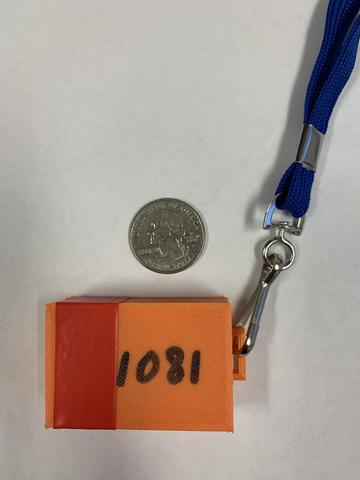
NIST researchers designed and tested these low-cost devices for detecting close contacts to potentially help limit disease spread while preserving privacy.
In efforts to limit the spread of disease while preserving privacy, an interdisciplinary research team at the National Institute of Standards and Technology (NIST) has designed and tested low-cost devices and methods that can detect when people or animals come into close contact with each other.
The wearable devices combine commercial Bluetooth radio hardware with NIST cryptographic features. While not always reliable in estimating the distance between wearers, the NIST system may be useful for research on how people and animals move through spaces and interact. The system may offer advantages over contact tracing using smartphones, which are not used consistently in certain settings and may be less private.
Seventeen volunteers in 10 households participated in the NIST study of system performance during normal activities. Devices were either worn or placed in the house to collect data for at least one hour a day. Researchers measured the strength of the radio signals received by the devices to estimate distance between the volunteers. They defined an “encounter” as occurring when device wearers came within 2 meters of each other for at least 15 minutes, based on the Centers for Disease Control and Prevention definition of close contact. Participants were also asked to manually log when and for how long they thought they had an encounter.
The results showed some correlation between the strength of the radio signal received and the distance between wearers, but estimates were unreliable due to effects of variables such as the direction the user was facing. There was also uncertainty about how to process trade-offs, such as how much of an error in distance was acceptable or whether close encounters were properly defined in terms of their possible effect on disease transmission.
“I don’t think anyone understands that trade-off — no one knows how to do optimization to stop the spread of disease,” NIST Fellow Sae Woo Nam said. “This system lets us start to collect data about how people encounter each other that can help us create interventions to help stop spread of disease.”
Device performance might be improved by use of more radio channels, better antennas or adding more sensing methods such as ultrasonic ranging. But even as is, the NIST method may help identify contacts with some potential for transmission of an airborne virus such as the one that causes COVID-19.
The system could help in designing buildings for pandemic resilience by mounting devices at fixed points in areas with poor ventilation such as elevators, Nam said. The system might be useful in settings such as nursing homes, where smartphones are not continually monitored, as well as in tracking animals to understand their interactions for the purpose of limiting disease spread.
“Disease wipes out whole flocks of animals, and it jeopardizes our food supply,” Nam said. “This is something we should think about for food security. We also want to treat animals humanely, and this is a tool to help prevent animals from getting sick and help understand how they get sick.”
The NIST system uses a cryptographic method, similar to that used in secure web transactions, that combines public encryption keys transmitted over the radio to make a shared, secret key unique to each encounter. When two devices sense that they are close, they generate a unique, encrypted encounter ID based on a random number. This prevents cyberattacks that could result from broadcasting of device IDs. The encounter ID is not linked to the devices or the people wearing it, preserving privacy. The anonymized data on encounters provides information about the use of buildings (or other spaces) that can inform decisions about safe numbers of occupants and environmental controls.
The Bluetooth project was one of many NIST studies launched in the early months of the COVID-19 pandemic. Several NIST researchers are continuing to work on encounter metrics and a different hardware platform for contact tracing.
Paper: K.E. Keenan, J. Aumentado, H. Booth, K.A. Briggman, M. Kraft, M.N. Martin, R.C. Peralta, A.Y. Robinson, K. Shalm, M.S. Stephens, E.A. Townsend and S.W. Nam. Development and Evaluation of Bluetooth Low Energy Device for Electronic Encounter Metrics. Journal of Research of the National Institute of Standards and Technology. Jan. 20, 2022. DOI: 10.6028/jres.126.043

